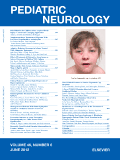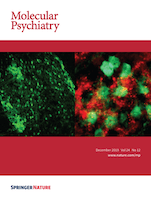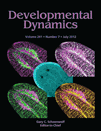
Molecular Autism
Scope & Guideline
Bridging disciplines to illuminate autism's complexities.
Introduction
Aims and Scopes
- Genetic and Molecular Mechanisms:
Research exploring the genetic underpinnings of autism, including studies on gene variants, haploinsufficiencies, and their roles in neurodevelopmental pathways. - Neurodevelopmental Profiles:
Investigations into the neuroanatomical and functional brain correlates of autism, including neuroimaging studies and animal models that reveal structural and connectivity alterations. - Behavioral Phenotyping:
Studies focusing on the behavioral manifestations of autism, including social cognition, sensory processing, and repetitive behaviors, often employing psychometric evaluations and observational methodologies. - Intervention and Treatment Strategies:
Research evaluating pharmacological and non-pharmacological interventions for autism, including clinical trials and systematic reviews aimed at improving clinical outcomes. - Environmental and Societal Factors:
Exploration of the impact of prenatal and early-life environmental factors on the development of autism, as well as societal implications and support mechanisms for individuals with autism.
Trending and Emerging
- Multimodal Approaches to Autism Research:
There is an increasing trend towards integrating various research methodologies, including genetic, neuroimaging, and behavioral studies, to provide a more comprehensive understanding of autism. - Neurobiological Mechanisms and Biomarkers:
Recent studies are focusing on identifying biomarkers for autism, which could lead to more accurate diagnoses and targeted interventions, reflecting a shift towards precision medicine in autism care. - Impact of Gut-Brain Axis:
Emerging research on the role of the gut microbiome in autism is gaining traction, exploring how gut health may influence neurodevelopment and behavior. - Social and Emotional Functioning:
There is a heightened emphasis on understanding the social and emotional aspects of autism, including studies on social cognition, emotional regulation, and the mental health of autistic individuals. - Developmental Trajectories and Lifespan Studies:
Research is increasingly focusing on the longitudinal aspects of autism, examining how traits and behaviors evolve from childhood into adulthood, which is crucial for developing effective interventions across the lifespan.
Declining or Waning
- Focus on Single Genetic Disorders:
Although early research often concentrated on specific genetic syndromes associated with autism (e.g., fragile X syndrome), there has been a shift towards broader genetic studies that encompass polygenic risks and interactions. - Traditional Diagnostic Approaches:
The reliance on established diagnostic tools (like ADOS) has decreased, as newer methodologies and technologies (e.g., machine learning, neuroimaging) are increasingly being adopted for more nuanced understanding. - Basic Animal Models without Translational Focus:
Research involving basic animal models that do not connect findings to human autism traits or clinical relevance appears to be waning, with a greater emphasis now on translational studies that bridge basic science and clinical application.
Similar Journals

CONGENITAL ANOMALIES
Advancing knowledge on congenital disorders.CONGENITAL ANOMALIES is a notable journal published by WILEY, dedicated to advancing the understanding of congenital disorders and anomalies through high-quality research and clinical insights. With an ISSN of 0914-3505 and an E-ISSN of 1741-4520, this journal has been a key resource for professionals in the fields of pediatrics, embryology, and developmental biology since its inception in 1973, although coverage discontinued in Scopus after 2019 due to evolving standards in publication. The journal is ranked in the 48th percentile in the domain of pediatrics, as well as in the 26th and 14th percentiles respectively for embryology and developmental biology, placing it among respected publications in its category. Although it does not currently offer open access options, its contributions remain vital for researchers, healthcare professionals, and students seeking up-to-date information on congenital anomalies, their origins, and potential interventions. With a commitment to fostering knowledge in this critical area of health science, CONGENITAL ANOMALIES continues to play an important role in the intersection of scientific research and clinical practice.

NEUROBIOLOGY OF DISEASE
Bridging Science and Therapeutics in NeurologyNEUROBIOLOGY OF DISEASE is a premier journal dedicated to advancing the understanding of neurological disorders and the underlying biological processes, published by Academic Press Inc, Elsevier Science. With an impressive impact factor indicative of its significance—ranked in the Q1 quartile in Neurology for 2023 and occupying the 14th rank out of 192 journals in the field of Neuroscience and Neurology—this journal serves as a critical resource for researchers, clinicians, and students alike. The journal has a rich history since its inception in 1994, continuously evolving its scope to encompass groundbreaking research and insights into neurobiological mechanisms and disease pathology. Though it currently does not provide Open Access options, NEUROBIOLOGY OF DISEASE remains a vital vessel for disseminating knowledge that significantly contributes to the field of neurology, fostering an understanding that can lead to innovative therapeutic strategies.

Frontiers in Molecular Neuroscience
Exploring the molecular basis of the brain's mysteries.Frontiers in Molecular Neuroscience, published by FRONTIERS MEDIA SA, is an esteemed open-access journal dedicated to advancing our understanding of the molecular mechanisms underlying neurological functions and disorders. Since its inception in 2008, the journal has established itself as a reputable source of cutting-edge research, earning a respectable Q2 ranking in both the fields of Cellular and Molecular Neuroscience and Molecular Biology as of 2023. With an ongoing commitment to fostering innovation, the journal presents a platform for researchers, professionals, and students to disseminate their findings and engage in scholarly discourse. The E-ISSN 1662-5099 ensures that research is readily accessible, facilitating the exchange of knowledge crucial to tackling the complexities of neurological conditions. Situated in Switzerland, the journal’s global reach is augmented by its open-access model, allowing for wide dissemination of critical research findings to a diverse audience. Join the vibrant community of scientists and practitioners who are shaping the future of molecular neuroscience through their contributions to this dynamic journal.

Behavioral and Brain Functions
Exploring the Intricacies of NeuroscienceBehavioral and Brain Functions is a leading Open Access journal published by BMC, dedicated to advancing the field of behavioral neuroscience, cognitive neuroscience, and biological psychiatry since its inception in 2005. This esteemed journal, based in the United Kingdom, has established itself as a vital resource for researchers and professionals, boasting a remarkable influence demonstrated by its Q1 and Q2 rankings across multiple relevant categories. With its commitment to providing unrestricted access to high-quality research, the journal facilitates the dissemination of significant findings in understanding the complex interactions between behavior and brain function. The journal ranks impressively within the Scopus database, positioning itself among the top-tier publications in its categories, making it an essential platform for academic discourse and innovation. As it converges through 2024, Behavioral and Brain Functions continues to play a crucial role in shaping the forefront of neuroscientific inquiry, inviting contributions that challenge our understanding and promote further exploration in these dynamic fields.

Advances in Autism
Unveiling New Perspectives in Autism Spectrum DisordersAdvances in Autism is a prominent academic journal published by Emerald Group Publishing Ltd, dedicated to the comprehensive exploration of autism spectrum disorders through the lenses of Cognitive Neuroscience, Developmental Psychology, and Psychiatry and Mental Health. Since its inception in 2015, the journal has made significant strides in disseminating high-quality research and fostering interdisciplinary collaboration within its diverse scope. With a respectable 2023 impact factor placing it in the Q3 category across multiple relevant fields, including Neurology and Clinical Psychiatry, Advances in Autism serves as an essential resource for researchers, practitioners, and students alike, aiming to advance the understanding of autism and its related challenges. Although currently not open access, the journal provides various subscription options to facilitate widespread access to its cutting-edge insights and empirical studies, making it an indispensable tool for anyone invested in autism research.

PEDIATRIC NEUROLOGY
Transforming Insights into Pediatric Neurological CarePediatric Neurology, a prestigious journal published by Elsevier Science Inc, is a leading resource in the field of child neurology and developmental neurosciences. With an impressive impact factor and categorization in the Q1 and Q2 quartiles across several relevant fields, including Pediatrics, Neurology, and Developmental Neuroscience, this journal is essential for researchers and healthcare professionals focused on pediatric neurological disorders. Since its inception in 1985, it has provided a platform for high-quality research, clinical studies, and reviews that drive advancements in diagnosis, treatment, and understanding of neurological conditions in children. Although the journal does not currently offer open access, it maintains a robust reputation in the academic community, bolstered by its prominent ranking in Scopus metrics. By engaging with the latest findings published in Pediatric Neurology, readers will gain vital insights that contribute to improving pediatric healthcare outcomes in neurology and neuroscience.

MOLECULAR PSYCHIATRY
Advancing the Frontiers of Mental Health ResearchMOLECULAR PSYCHIATRY, published by SpringerNature, is a premier peer-reviewed journal that has established itself as a leading platform for the dissemination of cutting-edge research in the fields of neuroscience, molecular biology, and psychiatry. With an impressive impact factor and a reputation for excellence, the journal is ranked Q1 in key categories, signifying its high academic quality and relevance. The journal’s scope spans groundbreaking studies and innovative therapeutic approaches that intersect at the molecular and cellular levels, providing invaluable insights into the biological underpinnings of psychiatric disorders. Since its inception in 1996, MOLECULAR PSYCHIATRY has evolved to support both established and emerging researchers, fostering a collaborative environment that enhances the understanding of mental health. It is committed to improving access to scientific knowledge, although it currently does not offer open access options. With its headquarters in London, the journal continues to play a pivotal role in enhancing the global dialogue on psychiatric and neurological advancements, making it an essential resource for academics and professionals dedicated to advancing mental health sciences.

PSYCHIATRIC GENETICS
Transforming Mental Health Research through Genetic DiscoveriesPSYCHIATRIC GENETICS, published by LIPPINCOTT WILLIAMS & WILKINS, is a pivotal journal dedicated to the interdisciplinary study of genetic factors in psychiatric disorders, bridging the fields of genetics, psychiatry, and neuroscience. With a commitment to advancing research from its inception in 1990 and continuing through 2024, the journal provides a platform for innovative studies and findings that explore the genetic underpinnings of mental health. Although not currently an Open Access publication, it reaches a wide audience concerned with the complex interplay between genetics and psychiatric conditions, contributing to its Q3 and Q2 quartile rankings across multiple relevant categories in 2023. The importance of this journal cannot be understated; it serves as a crucial resource for researchers, clinicians, and students eager to uncover insights that could lead to more effective interventions and treatments in the realm of mental health.

DEVELOPMENTAL DYNAMICS
Illuminating the Pathways of Biological DevelopmentDEVELOPMENTAL DYNAMICS is a prominent journal in the field of Developmental Biology, published by WILEY. This esteemed journal, identifiable by its ISSN 1058-8388 and E-ISSN 1097-0177, provides a critical platform for the dissemination of innovative research covering cellular and developmental processes across diverse biological systems. With a 2023 impact factor placing it in the Q2 category of Developmental Biology and an impressive Scopus rank of #39/82, the journal plays a vital role in advancing knowledge and fostering collaboration among researchers, professionals, and students. Although it is not an open-access publication, DEVELOPMENTAL DYNAMICS remains a cornerstone in the academic community, particularly for those dedicated to understanding the complexities of biological development. The journal's convergence from 1992 to 2024 reflects its longstanding commitment to high-impact research that influences both theoretical and practical applications in the field.

Noropsikiyatri Arsivi-Archives of Neuropsychiatry
Unveiling Insights into Psychiatric DisordersNoropsikiyatri Arsivi-Archives of Neuropsychiatry is a prominent scholarly journal dedicated to advancing knowledge in the fields of neuropsychiatry and mental health. Published by the Turkish Neuropsychiatry Association, this journal aims to disseminate high-quality research that contributes to a deeper understanding of psychiatric disorders, innovative treatment modalities, and interdisciplinary approaches in neuroscience. Based in Turkey, the journal has been in circulation since its inception, with a rich history reflecting its commitment to addressing contemporary issues in mental health care. It is currently indexed under Scopus, with notable rankings in both Psychiatry and Mental Health (Rank #378/567, 33rd Percentile) and General Neuroscience (Rank #97/113, 14th Percentile), highlighting its increasing relevance and impact in the academia. Although it is not currently an open access journal, its contributions remain vital for researchers, professionals, and students who wish to stay abreast of the latest developments and research in neuropsychiatry.